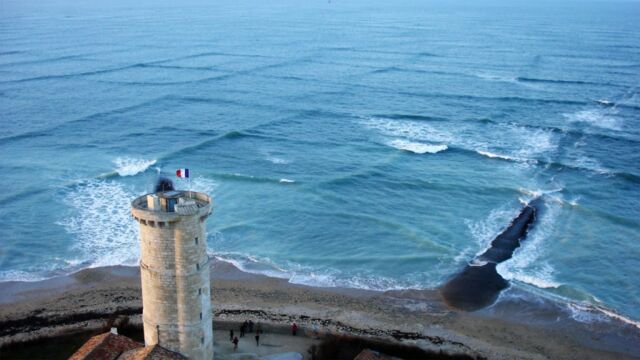The summer of all dangers? The goal isn't to cause you any anxiety before you go on vacation, but Maxisciences wanted to discuss a natural phenomenon that can be harmful to those who are going to the beach. By boat, on a surf or a paddle or just swimming. Find out more about square waves.
Discover our latest podcast
Variable wave geometry
Lexically speaking, it is more common to associate the word waves with rather circular terms like 'rolls', 'curls', 'hollow', 'roll' or 'tube'. However, we may have to review our ocean geometry, for security reasons especially, because waves can also be square!
This is a natural phenomenon that is also known as 'cross sea'. As you know, the ocean experiences more or less significant visible deformations depending, in particular, on surface ocean currents that are generally caused by the wind. The appearance of square waves occurs when two wave systems intersect at near-perpendicular angles.
This can occur when waves generated by one weather system collide with other waves produced by another weather system. They lead to a striking sight at the surface of the water: a kind of grid that can be observed from afar.
A fascinating but dangerous phenomenon
In a sea cross, the water undergoes very different wind and wave directions and the waves can sometimes reach a significant height. While it is fascinating to watch and seems harmless, this phenomenon is still very dangerous. Many sailors have mentioned that during crossings, their boats, whether imposing or more modest, have been powerless against these waves coming from all angles. So, there's no doubt a surfer or swimmer would have trouble dealing with this phenomenon...
Moreover, this cross-sea creates perilous tides and movements that are very difficult to fight. That is why it is highly recommended when you see these squares forming on the surface of the water, to make sure swimmers and boaters return to the shore as quickly as possible.
Known for having repeatedly witnessed these square waves, Ile de Ré is home to the Lighthouse of the Whales. In its museum, which is overhung by a seventeenth-century tower, you can discover the solution to Kadomtsev-Petviashvil equation, which scientifically and mathematically explains the whole process behind the cross-sea.















